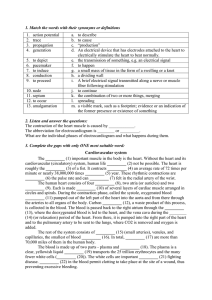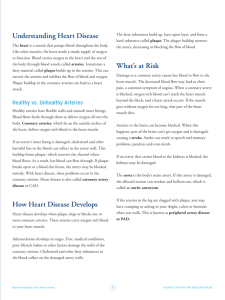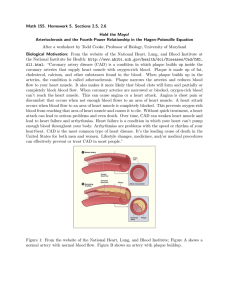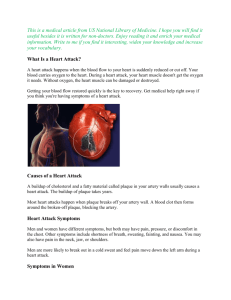Math 155. Reading 6. Hold the Mayo!
advertisement
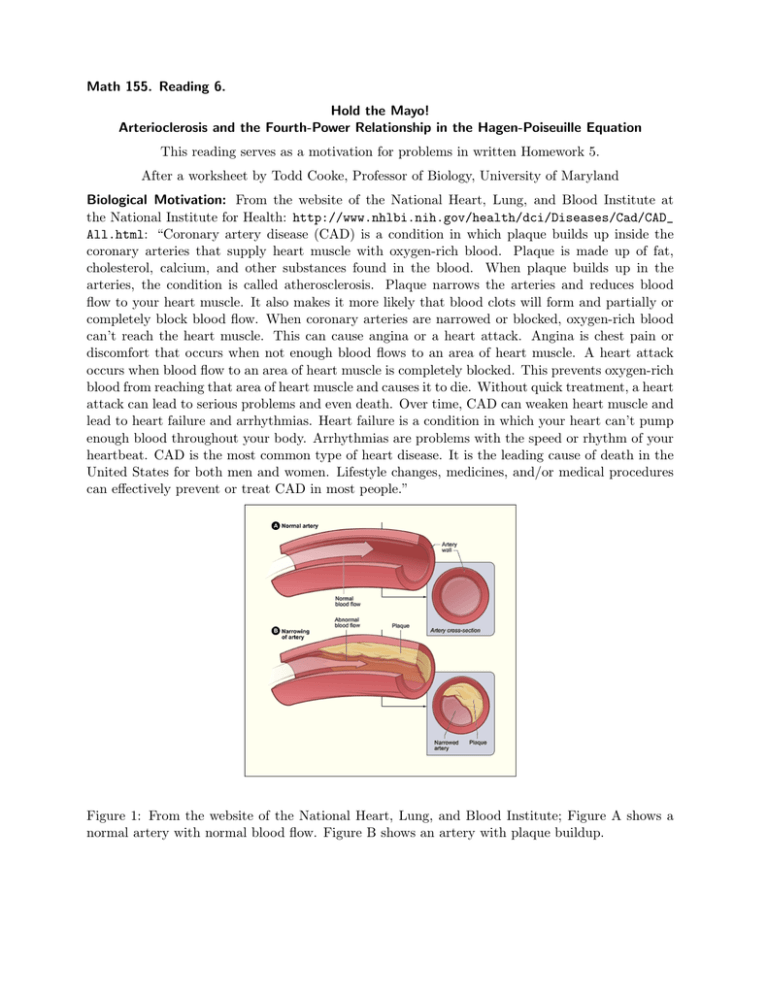
Math 155. Reading 6. Hold the Mayo! Arterioclerosis and the Fourth-Power Relationship in the Hagen-Poiseuille Equation This reading serves as a motivation for problems in written Homework 5. After a worksheet by Todd Cooke, Professor of Biology, University of Maryland Biological Motivation: From the website of the National Heart, Lung, and Blood Institute at the National Institute for Health: http://www.nhlbi.nih.gov/health/dci/Diseases/Cad/CAD_ All.html: “Coronary artery disease (CAD) is a condition in which plaque builds up inside the coronary arteries that supply heart muscle with oxygen-rich blood. Plaque is made up of fat, cholesterol, calcium, and other substances found in the blood. When plaque builds up in the arteries, the condition is called atherosclerosis. Plaque narrows the arteries and reduces blood flow to your heart muscle. It also makes it more likely that blood clots will form and partially or completely block blood flow. When coronary arteries are narrowed or blocked, oxygen-rich blood can’t reach the heart muscle. This can cause angina or a heart attack. Angina is chest pain or discomfort that occurs when not enough blood flows to an area of heart muscle. A heart attack occurs when blood flow to an area of heart muscle is completely blocked. This prevents oxygen-rich blood from reaching that area of heart muscle and causes it to die. Without quick treatment, a heart attack can lead to serious problems and even death. Over time, CAD can weaken heart muscle and lead to heart failure and arrhythmias. Heart failure is a condition in which your heart can’t pump enough blood throughout your body. Arrhythmias are problems with the speed or rhythm of your heartbeat. CAD is the most common type of heart disease. It is the leading cause of death in the United States for both men and women. Lifestyle changes, medicines, and/or medical procedures can effectively prevent or treat CAD in most people.” Figure 1: From the website of the National Heart, Lung, and Blood Institute; Figure A shows a normal artery with normal blood flow. Figure B shows an artery with plaque buildup. Mathematical Motivation: Consequences of Nonlinearity. The relationship between the flow F (say, in cubic centimeters per second) of a liquid through a cylindrical tube of radius r and length L is given by the Hagen-Poiseuille equation F = ∆P 4 r , ηL (1) where η is the viscocity of the fluid and ∆P is the pressure difference in the tube. What are the consequences of this nonlinear relationship between flow and radius? Putting it Together: Consider the flow of blood with viscocity η through an artery, which we model as a cylindrical tube of radius r, length L and a pressure difference ∆P produced by the beating heart. Writing k = ∆P ηL , the Hagen-Poiseuille equation becomes F (r) = kr4 . (2)
